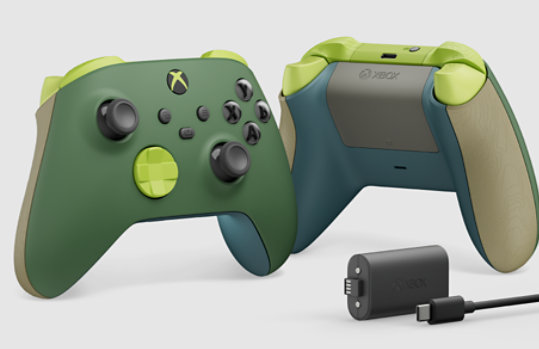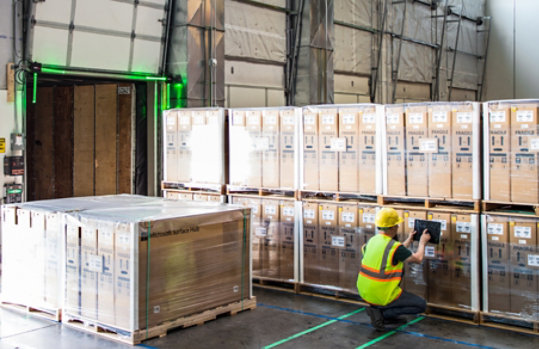Empowering customers and partners
We are working to help our customers, partners, and suppliers around the world to reduce their carbon footprints, understand water-related risks, and make environmental decisions through our learnings and with the power of data, AI, and digital technology.

Expanding Microsoft Cloud for Sustainability
Microsoft Cloud for Sustainability helps empower organizations to track and manage data at scale and to unify environmental, social, and governance data so they can record, report, and holistically understand the sustainability impact of their organization and value chain.

Supporting partner solutions
Microsoft provides the technologies and platform to guide digital transformation. We work with a global ecosystem of partners, who provide the capabilities to unlock data and build industry solutions to improve sustainability outcomes.

Increasing transparency and promoting trust
Environmental Credit Service (Preview) delivers common, open-standards infrastructure and a shared process and data standard to help track the origination process for carbon credits and other environmental assets.
Improving device sustainability
We’re committed to reducing the carbon intensity of our devices and we’ve invested in designing for a smaller manufacturing footprint across the entire product lifecycle of our devices.
Designing for sustainable devices
Improving the sustainability of our devices starts with hardware design. We work to create devices that are built with integrity and with reduced waste and carbon impact across their life cycles.

Assessing the product lifecycle
We publish the carbon footprint of each device, along with other sustainability metrics, in our Eco-profiles. Rigorous third-party ecolabels and standards provide validation of our products’ environmental attributes and achievements.
Extending the life of our devices
Repairability can offer significant emissions and waste reduction benefits. The newest generation of portable Surface devices are the most repairable devices in their product lines to date. And at end-of-life, the consumer mail back recycling program allows customers to recycle their devices through Microsoft.
Reducing the impact of product usage
Our newest laptops and tablets are ENERGY STAR® Certified and registered EPEAT® Gold in more than 30 countries. We continue to focus on increasing the energy efficiency of our devices to reduce direct emissions.
Improving the sustainability of Xbox
Xbox is the first gaming console to offer carbon-aware game downloads and updates as part of Shutdown (energy saving) mode. And game creators and developers can utilize the Xbox Developer Sustainability Toolkit to build sustainability into their own games.
Improving design and efficiency with AI
We continue to focus on increasing the energy efficiency of our devices to reduce direct emissions, and to explore how AI can help improve the design and efficiency of our devices.

Enabling our LCA process with data and AI
Our life cycle assessments (LCAs) help to build sustainability into our devices with the goal of facilitating product and supply chain decision making at a larger scale. We’re partnering with Makersite to transform our LCA process with AI by shifting from directional modeling to a supply-chain-focused environmental impact accounting approach.
Advancing measurement and accountability
Microsoft has used optional diagnostic data from Windows devices to estimate power consumption since 2020, and each year we’ve worked to improve the quality of the methodology. We’re working with the Carbon Trust and other leading tech companies to develop an industry-first for tracking the carbon emissions associated with connected devices while being used by customers.
Manufacturing and sourcing for sustainability
At Microsoft, we continue to work on improving the sustainability impact of our manufacturing and sourcing practices, including increasing the amount of renewable energy used in our manufacturing supply chain, improving the integrity of the decarbonization data shared by suppliers, and quantifying the decarbonization impact from our suppliers shifting to renewable energy.

Decarbonizing our device supply chain
Meeting our decarbonization goal and achieving carbon negativity by 2030 requires focus on three key areas in our device supply chain: measurement and visibility, optimization control, and instilling technology and operational enhancements to drive emissions reduction and lead the industry.

Measurement and visibility
By mirroring and translating the financial budget into a carbon emissions budget for logistics, we enable precise emissions target setting for ongoing reporting. This increases transparency across the business and enables decision making and recalibration to the annual target and control annual results.
Optimization control
Containers for Xbox are loose loaded rather than palletized, improving speed and efficiency. In 2023, this process saved over 400 containers’ worth of emissions, or 280 mtCO2e.
Technology and operational enhancements
Electric vehicles and alternate fuel emissions remain a focus of outbound shipments and final mile deliveries. Approximately 25 percent of all online consumer deliveries were made with an electric or carbon neutral option. Our devices supply chain drove initiatives and solar installation across the distribution network.
Advancing climate aware software engineering
We’re committed to adopting green software engineering principles in every step of building, deploying, and managing software applications, making them carbon efficient.

Developing standards, tools, and best practices
Microsoft continues to be a founding member of the Green Software Foundation (GSF) and contributes to several climate aware software tools and standards.

Helping to optimize Azure workloads
Microsoft developed new technical guidance and best practices to help customers and partners adopt and operate on Azure sustainably as part of the Cloud Adoption Framework.

Windows energy recommendations
With the introduction of Energy Recommendations in Windows 11, we continued the work we started to make Windows carbon aware—with a focus on empowering customers to reduce energy consumption and carbon emissions; and improve battery life.
Delivering technology for climate action
We’re committed to ensuring organizations around the world—from nonprofits to research institutions, governments, and corporations—have equal access to open, interoperable, reliable, and timely climate data.

The Planetary Computer
With over 120 data sources and over 50 petabytes of data, the Microsoft Planetary Computer maintains one of the largest collections of open data about our planet. Within the Planetary Computer, we provide open access to environmental monitoring data in consistent, analysis-ready formats.

